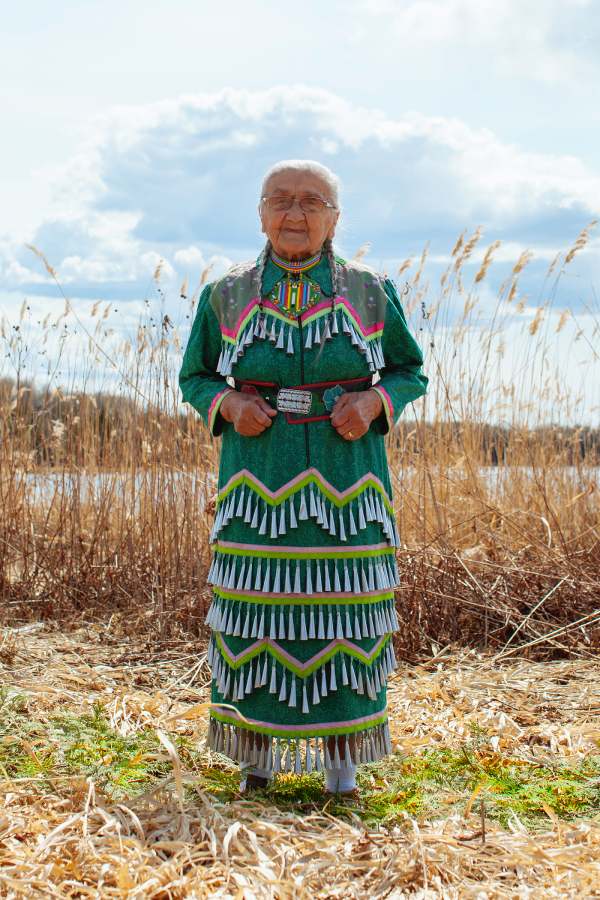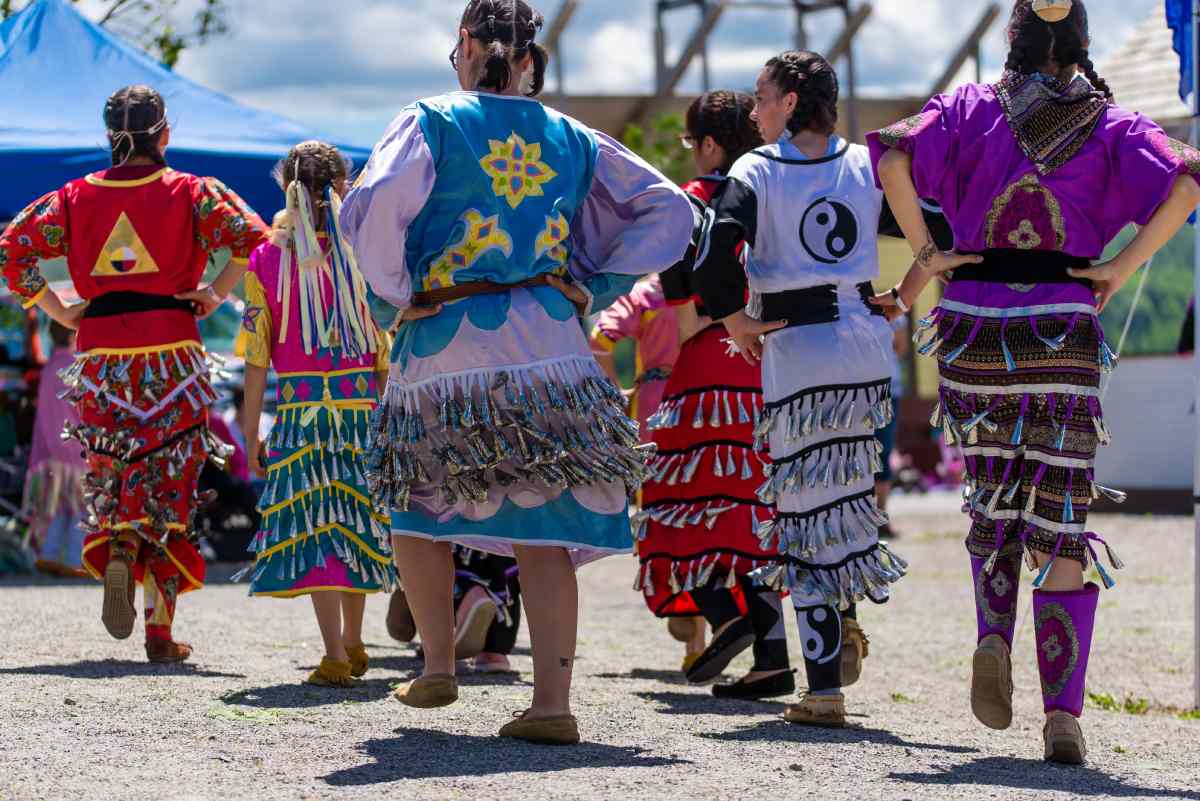Shiibaashka’igan – The Jingle Dress National Historic Event

© Red Works Photography for the exhibit Shiibaashka'igan: Honouring the Sacred Jingle Dress, The Muse / Lake of the Woods Museum
The shiibaashka’igan – jingle dress was designated as a national historic event in 2023.
Historical importance: The shiibaashka’igan – jingle dress is a sacred Anishinaabe women’s dress and dance tradition.
Commemorative plaque: no plaque installedFootnote 1
Shiibaashka’igan – The Jingle Dress
The Shiibaashka’igan – Jingle Dress is a sacred Anishinaabe women’s dress and dance tradition. When the dress is worn, the jingles, which are made of metal cones, make a rhythmic jingling sound when they touch each other as the dancer moves to the tempo and beat of the dance drum and traditional songs of the drum group. Each step of a Jingle Dress Dance is understood by some as a healing prayer. The dancer keeps one foot touching the ground to stay connected with the earth while the sound of the jingles generates an energy that moves through the air and reaches out to the spirits. One of the origins of the Jingle Dress is the Anishinaabe community of Naotkamegwanning First Nation (also known as Whitefish Bay) in the Lake of the Woods region of northwestern Ontario and another is the Mille Lacs Ojibwe community of north-central Minnesota. Bequeathed by Gichi Manidoo (Creator) in a dream and drawing upon Anishinaabe spiritual practices and traditions, Shiibaashka’igan has become a popular and highly esteemed dance style and means of healing, reclaiming culture, and asserting identity. Widely adopted by First Nations in Canada and the United States, it has become an official powwow dance category since being introduced in the 1960s by Maggie White of Naotkamegwanning First Nation. The making of the dress and the dance are important expressions of the roles of Anishinaabe women as healers and caretakers who, during the 20th century, ensured the physical and spiritual well-being of their families and communities by turning to Shiibaashka’igan to help mitigate the effects of the influenza pandemic and colonialism.
The Jingle Dress has evolved from early examples of the 1920s, which were simple in design and fabric and embellished with rows of metal cones sewn across the bodice and ankle-length skirt, to the later introduction of synthetic fabrics in vibrant colours with embellishments and the cones sewn in straight rows or in geometric patterns.

© Parks Canada
Oral traditions date the origins of the Jingle Dress to the early 20th century. This was a time of extreme hardship caused by the influenza pandemic (1918–1919) and the heightened implementation of assimilative policies by the federal government, including the continued prohibition of First Nations’ cultural and spiritual ceremonies and practices. During this difficult period, Anishinaabe women introduced the Jingle Dress and dance for the physical and spiritual healing of family and community members. One of the most widely circulating oral traditions traces an origin of the Jingle Dress to the late Maggie White (1922–1991). When eight-year-old Maggie White became seriously ill, her grandfather Pinasse had a series of dreams in which he was shown how to make a special dress adorned with shiny metal cones for his granddaughter. He sewed the dress, asked his very weak granddaughter to wear it, and taught her a dance that he had received in his dreams. Despite her illness, the young girl managed to dance, and she was cured.
“The jingle dress symbolizes the spirit of healing. The spirit of dance, drum and the connection to family, community, and the connection to the spiritual. These connections have helped maintain the sacredness of life, to live in a good way: the original way of how creator wanted us to live.”
Later in life, Maggie White became known as the “First Lady of the Jingle Dress Dance,” because she popularised the Jingle Dress and dance tradition at powwows throughout Canada and the United States from the late 1960s to the early 1980s. This led to the Jingle Dance becoming an official powwow dance category. Today, the Jingle Dress Dance is revered at both competition and traditional powwows across North America where new generations of women and Two-Spirit individuals share the dance, which continues to be a source of healing for individuals, families, and communities. Participants of protest movements also wear the Jingle Dress as a powerful assertion of identity and a statement of anti-colonial resistance.
The nomination of the Shiibaashka’igan – Jingle Dress for designation as a national historic event was supported by Maggie White’s family.
This press backgrounder was prepared at the time of the Ministerial announcement in 2024.
The National Program of Historical Commemoration relies on the participation of Canadians in the identification of places, events and persons of national historic significance. Any member of the public can nominate a topic for consideration by the Historic Sites and Monuments Board of Canada.
- Date modified :